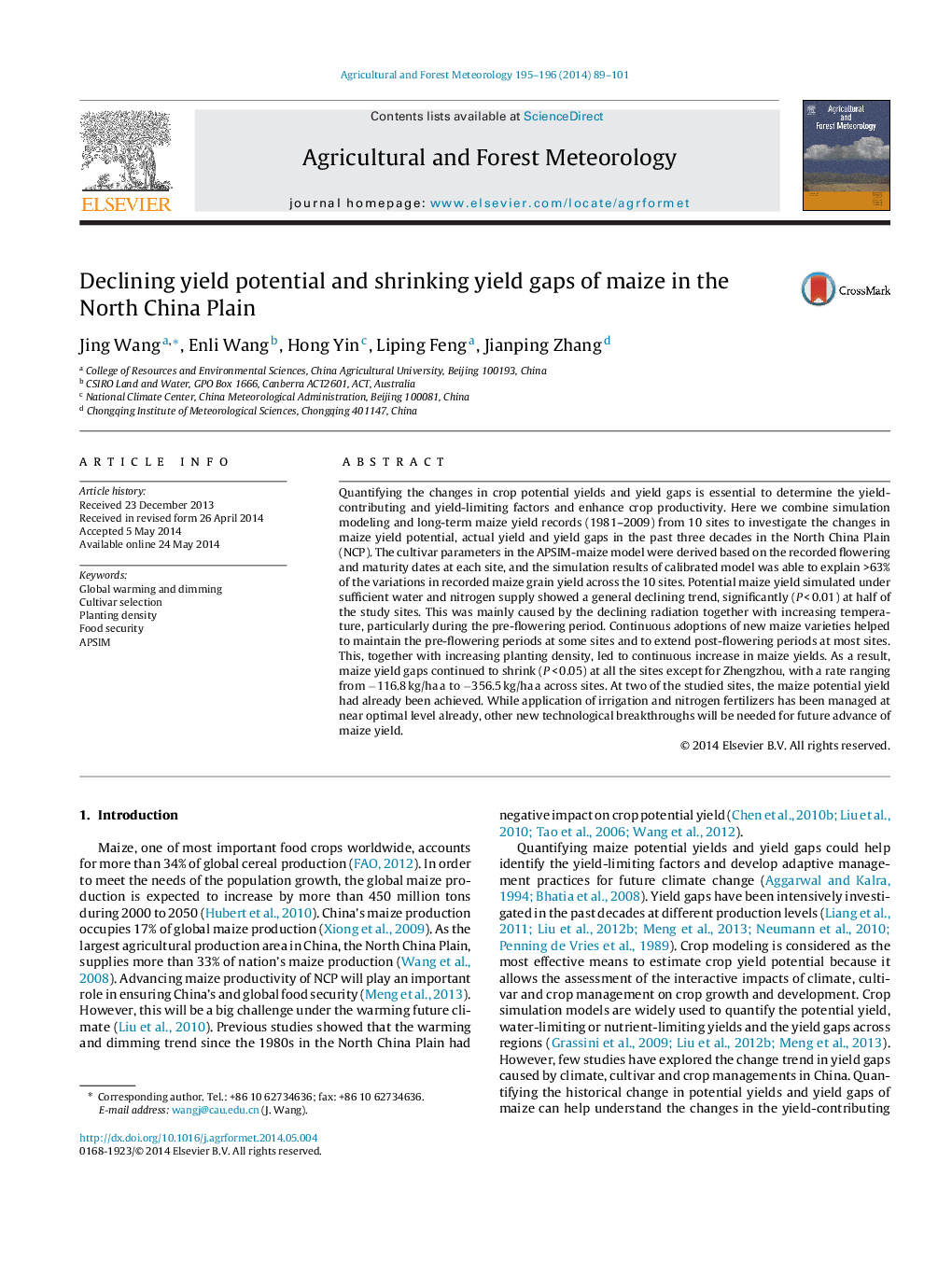| Article ID | Journal | Published Year | Pages | File Type |
|---|---|---|---|---|
| 81730 | Agricultural and Forest Meteorology | 2014 | 13 Pages |
•Climate variation in NCP negatively impacted on maize potential yield.•Cultivars selection and increasing planting density led to improved maize yield.•Crop model could disentangle the compounding effect of environment and technology.
Quantifying the changes in crop potential yields and yield gaps is essential to determine the yield-contributing and yield-limiting factors and enhance crop productivity. Here we combine simulation modeling and long-term maize yield records (1981–2009) from 10 sites to investigate the changes in maize yield potential, actual yield and yield gaps in the past three decades in the North China Plain (NCP). The cultivar parameters in the APSIM-maize model were derived based on the recorded flowering and maturity dates at each site, and the simulation results of calibrated model was able to explain >63% of the variations in recorded maize grain yield across the 10 sites. Potential maize yield simulated under sufficient water and nitrogen supply showed a general declining trend, significantly (P < 0.01) at half of the study sites. This was mainly caused by the declining radiation together with increasing temperature, particularly during the pre-flowering period. Continuous adoptions of new maize varieties helped to maintain the pre-flowering periods at some sites and to extend post-flowering periods at most sites. This, together with increasing planting density, led to continuous increase in maize yields. As a result, maize yield gaps continued to shrink (P < 0.05) at all the sites except for Zhengzhou, with a rate ranging from −116.8 kg/ha a to −356.5 kg/ha a across sites. At two of the studied sites, the maize potential yield had already been achieved. While application of irrigation and nitrogen fertilizers has been managed at near optimal level already, other new technological breakthroughs will be needed for future advance of maize yield.
